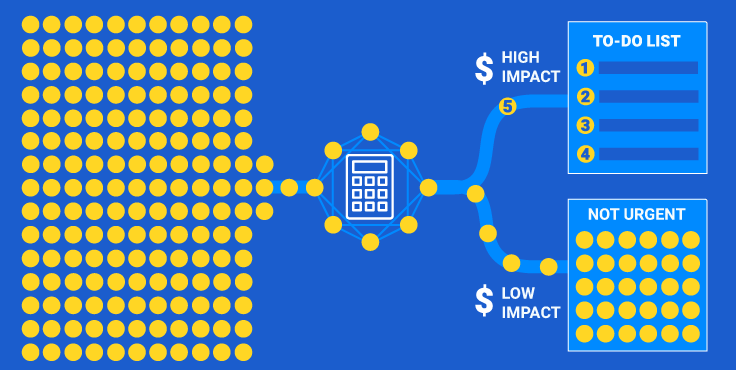The Secrets To Successful Search Campaigns: What Makes Them Great

Knowing which campaigns are performing the best for an account helps you understand the behavior of your audience and helps you design new strategies and/or campaigns. In winning search campaigns, each of a campaign's ad groups has a tightly-related set of keywords. By studying the keywords in an ad group and the associated ads it is possible to understand the reason it got such great results.
Questions like these come to mind:
- What indicates a successful campaign?
- What elements make a difference?
- What influenced the positive result?
The answers to these questions are not always easy to uncover. Here are some tips to help set you on the right path.
Indicators of a successful paid search campaign
To gauge the success of a marketing campaign, it is important before the campaign begins to set a goal to strive for and establish KPI (key performance indicator) benchmarks to measure against and monitor how you are tracking toward your goal. You could use industry benchmarks, but we strongly recommend you use your historical performance data from similar campaigns to ensure benchmarks are attainable… NOTE: Make sure you revisit benchmarks regularly and adjust them as campaign performance improves!
A successful paid search campaign should meet or exceed benchmarks to ensure a positive return on investment (ROI). These are the top indicators to follow:
- Return on Ad Spend (ROAS)
- Cost per acquisition (CPA)
- Conversion rate
- Cost per click (CPC)
- Click-through rate (CTR)
Elements that make a difference
Every successful campaign contains "winning" and "losing" campaign assets (keywords, ads, landing pages) at the lowest level of campaign hierarchy. Each contributes to overall campaign performance. The best way to improve performance is to prune the losers and stimulate/scale the winners. Knowing the role each element plays and how they relate to each other is the key to knowing which elements are contributing to the success of a campaign.
Keywords: Keywords are the heart of your campaign. They are the connection point with users searching on the internet. Taking the time to research a good set of keywords that align with your brand and products and/or services is what makes a search campaign work properly. To understand why a campaign did well you need to analyze which of your keywords matched someone's search term and triggered your ad, and if the KPIs of the Keyword met the benchmarks you set.
Ads: It is important to analyze keywords in relation to ads. If keywords are the heart of your campaign, ads are the face. Even if you use perfect words, it won't do you any good if you don't have ads that correctly match to your set of keywords. So, by looking at CTRs you can find out which ones are performing best and understand the keyword and ad combinations that work well for your brand.
Landing pages: What's the point of having a generous heart and a pretty face if you don't know how to connect with people? It does not work. The same happens with campaigns. Even when your ads have a great CTR, a poor landing page results in a low conversion rate. That's not so great, since clicks incur cost whether or not your landing page generates conversions. The landing page is where the rubber meets the road, where your product or offer is judged vs. your competitors. Even if the campaign has good keywords that match your ads, it doesn't matter if the landing page isn't equally relevant and compelling.
Search terms: Another essential practice is to delve deeper into the campaign by looking at search terms. Search terms are a direct connection between you and how your audience thinks. A proper analysis of search terms will show you new keyword opportunities that can boost your results. Search terms reveal how your audience wants to relate to your brand.
Conclusion
The success of a search campaign depends on the harmony of various elements at different levels within the hierarchy of the campaign structure. Each element interacts with the others to get the right message to the right customers, moving them through the digital marketing funnel from impressions, to clicks, to conversions. Due to complex interactions between elements, it is imperative to analyze KPI metrics (e.g. CTR, conversion rate, and ROAS or CPA) against benchmarks to understand what is and isn't working.
Knowing what keyword, ad and landing page combinations work well for your brand helps you when creating new campaigns. You can use this information to create new campaigns that are more likely to be successful, and to improve your overall marketing results.
Comparisons to benchmarks at the lowest level of campaign hierarchy allows you to make changes to existing campaigns that may not be performing as well as you’d like. For example, you can change the keywords you’re targeting, or the content of your ads, to better align with what your customers are searching for.
Because of the large volume of data involved when analyzing down to search terms in a campaign, it is a good idea to have a tool that automates this process and provides recommendations. A prescriptive analytics solution with embedded digital marketing expertise, like Condati's Quant Marketer, can help marketers make data-driven decisions about paid search campaigns. By analyzing past and current campaign data compared to benchmarks, Quant Marketer can identify how to optimize ad spend and improve campaign performance. To see how Quant Marketer can help your business, book a demo today.




